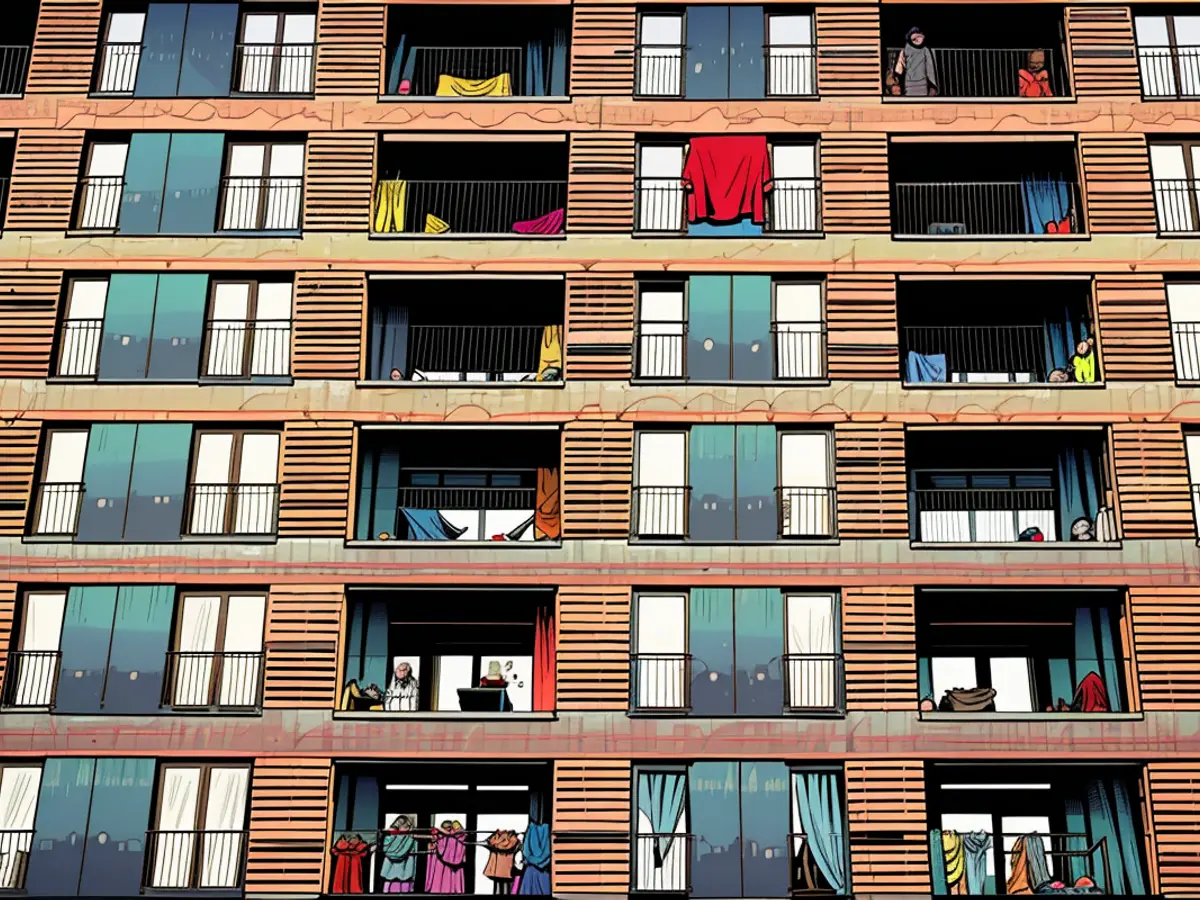Census - Statistics: Almost two million vacant apartments
Despite high housing demand: Many houses are vacant in Germany. According to Census data, there were approximately 1.9 million vacant houses in Germany on May 15, 2022. This corresponds to a vacancy rate of 4.3 percent, as reported by the Federal Statistical Office.
"The Census numbers alarm us all," says Ralph Henger, economist for housing policy and real estate economics at the Cologne Institute for Economic Research (IW Cologne). High vacancy rates indicate a split housing market. While there is a severe housing shortage in urban centers, many properties are vacant in rural areas.
More than half of the properties (55 percent) have been vacant for over a year. "This is a structural vacancy that will not disappear into thin air," says Matthias Waltersbacher from the Federal Institute for Building, Urban and Spatial Research. He heads the department for housing and real estate markets.
Only slightly more than a third of the vacant houses (38 percent) were available for occupancy within the next three months. The respective shares in Hamburg, Bremen, and Berlin were significantly higher at 52-61 percent. For nearly every fourth vacant house (24 percent), renovation or construction work was planned. Demolition was only planned for four percent of the vacant houses. Seven percent were intended to be sold or used by the owners themselves. For every fifth vacant house, "other reasons" were given.
Problems with vacant properties
Experts observe the so-called "doughnut effect": New housing estates are being built on the outskirts while inner-city areas deteriorate. According to Matthias Waltersbacher, the reasons for this are not only outdated building fabric but also smaller living spaces, closer proximity to neighbors, or poor parking facilities.
With vacancy come significant problems, according to Henger from IW Cologne. "For example, dilapidated houses can lower property values in the surrounding area," says the economist. Crime and vandalism also play a role. In addition, the existing infrastructure must be maintained. The population living there must bear the costs for this. "This is one of the biggest hidden problems of vacancy."
"1.9 million vacant houses in Germany represent significant untapped potential," estimates Waltersbacher. It is important to keep young people in the regions. So, according to him, peripheral regions should be culturally promoted, and transportation connections to larger cities should be improved. In times when more people work from home, for example, vacant houses could be converted into co-working spaces.
"Jung kauft Alt" program
To address vacancy, there's approximately the residential property program "Jung kauft Alt". "It's a good program to reactivate vacant housing and buildings outside urban areas," says Economist Henger. Some communes have already implemented it. The federal government plans to roll out the program nationwide - "but the funds are scarce."
The data on vacancy comes from the 2022 Census, which is based on official registries and a survey of twelve percent of the population on various topic areas. According to the Federal Office, around 23 million property owners provided information on their real estate, as did around 8,000 housing companies.
Press release Federal Statistical Office Census 2022 on vacant housing
- In Saarland, the vacancy rate of living spaces is influenced by this national trend, as reported by the Federal Statistical Office.
- The Institute of the German Economy (IW) in Cologne and experts in Wiesbaden are also concerned about the vast number of vacant houses in East Germany.
- The Eifel region, known for its picturesque landscapes, also has its share of vacant living spaces, contributing to the overall German vacancy rate.
- Many of these vacant houses were built during West Germany's economic boom and now require significant renovation or construction work.
- The real estate market in Cologne, a major city in Western Germany, is showing a higher percentage of occupied vacant houses compared to rural areas in the East.
- The Federal Institute for Building, Urban, and Spatial Research in Bonn is also investigating potential solutions to reduce vacancy rates across Germany.
- The Census data also highlights the importance of maintaining infrastructure in areas with high vacancy rates, to prevent further deterioration of properties.
- To tackle this issue, the Federal Statistical Office encourages collaboration between government agencies, housing companies, and local communities to revitalize vacant living spaces and support the German housing market.








